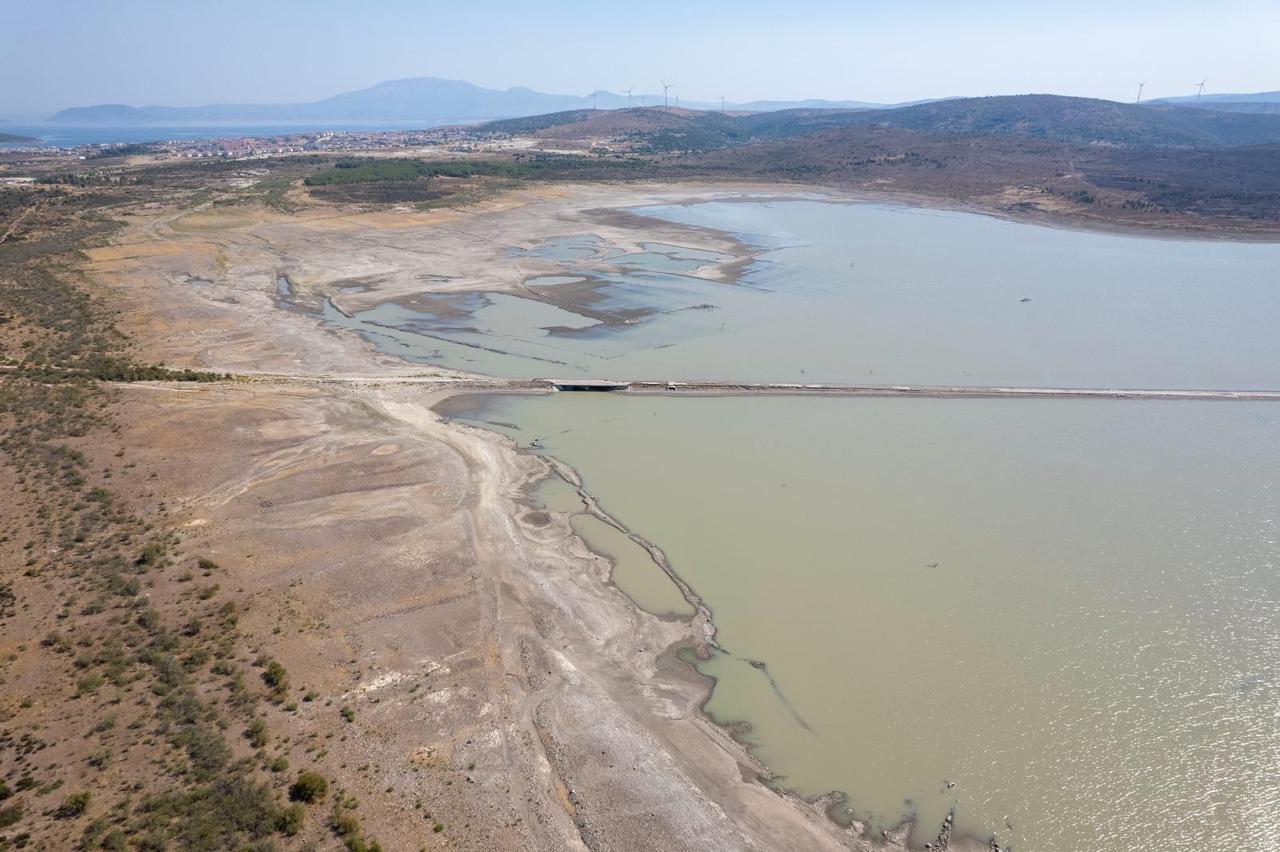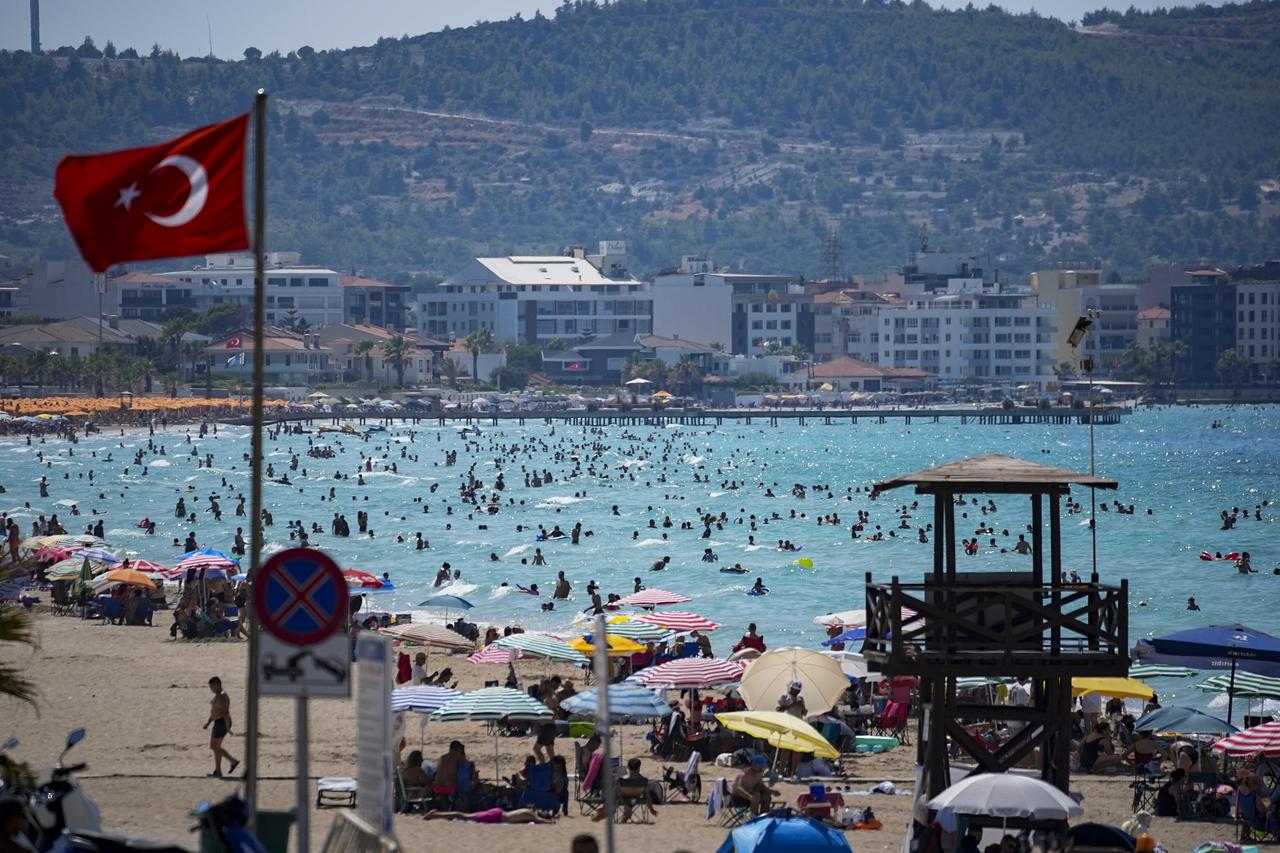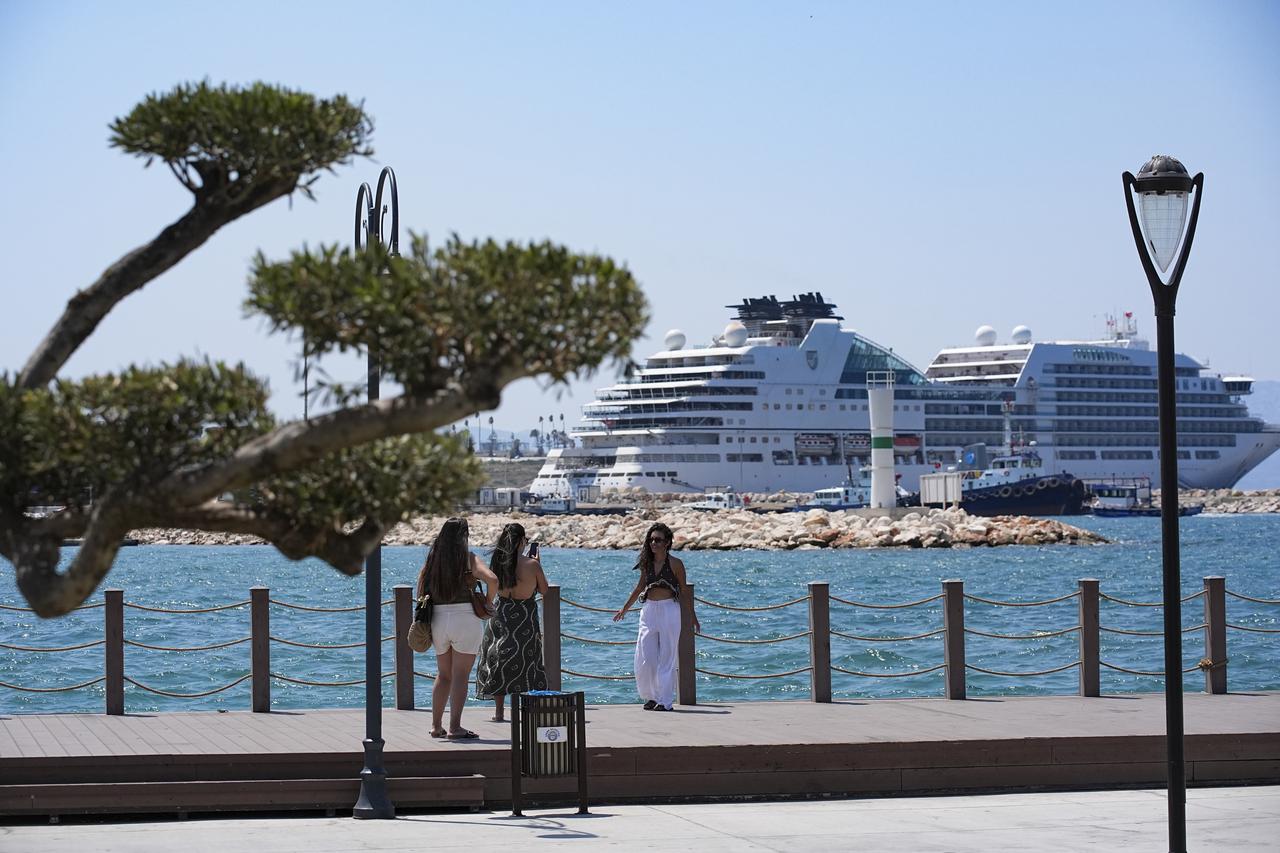
Türkiye’s Aegean coastline is experiencing a deepening water crisis as dam levels plummet, supplies run dry, and both locals and tourists struggle to meet basic needs.
In Izmir and surrounding resort towns like Cesme, Kusadasi, and Foca, water outages have become a daily reality, raising serious concerns about infrastructure, climate change, and long-term planning.

In Cesme, the popular summer destination near Izmir, authorities extended daily water cuts from 7 to 10 hours.
The Izmir Water and Sewerage Administration (IZSU) announced the new schedule, now from 23:00 to 09:00, after water levels at the Kutlu Aktas Dam fell below 5 percent.
“Existing water resources can no longer meet the rising demand during the summer season,” IZSU said in a statement.
Dr. Akgun Ilhan, a water management expert at Bogazici University, told Hurriyet that the situation is no longer seasonal. “The water level at Kutlu Aktas Dam dropped below the 5 percent mark, which is technically the ‘dead volume,’” she said.
“This means the water is either unreachable or too muddy and expensive to treat. The cost of extraction rises, and quality drops drastically.”

Residents in Yeni Foca described how daily life has collapsed under the ongoing crisis.
“We wash our faces in the sea. We can’t flush toilets or wash dishes,” said Figen Onur, a resident since 1984, as reported by Dunya. “When the water comes, we run home like we’ve found gold.”
With no running water for days, locals now fill their tanks with bottled water. Onur and her neighbors carry water to elderly and sick residents. “Some people here live with four children or chronic illnesses. It’s becoming a public health risk.”
Others posted complaints online about dirty beach showers and limited water access in tourist areas. Many canceled their travel plans or left Cesme early.
Dam levels across western Türkiye fall to alarming lows
According to official data, dam levels in the region have dropped far below normal.
Active capacity:
These dams supply drinking water to major parts of Izmir and surrounding towns.
Dr. Ilhan told Hurriyet that Türkiye’s water availability per person fell from over 4000 cubic meters in the 1960s to around 1300 today. “We are quickly approaching the threshold of water-poor countries,” she said. “If we stay on this path, that number may fall below 1000 cubic meters within 20 to 30 years.”

Experts warn that the root causes go beyond climate and rainfall.
“This crisis is not only about the weather,” said Dr. Ilhan. “It results from structural, administrative, and sectoral failures that turn manageable stress into a system-wide collapse.”
Tourism and agriculture place huge demands on fragile infrastructure. “In places like Cesme, water use per person in hotels, spas, and pools is up to 15 times more than that of residents.” At the same time, farmers in the Aegean still rely on wasteful flood irrigation to grow water-heavy crops like corn and cotton.
Dam stays full but reserved for industry, not Izmir's residents
A separate controversy has fueled public anger: the Guzelhisar Dam near Aliaga remains nearly full, but its water is reserved for the petrochemical company PETKIM.
Local journalist Mustafa Yilmaz, reported that while Tahtali Dam holds just 20 million cubic meters, Guzelhisar holds over 85 million.
Yet, IZSU receives less than 1 percent of that water. “While millions of residents face severe shortages, the dam’s water is locked away for industrial use,” said Yilmaz. “This is not sustainable, and it defies common sense.”
Leakage, outdated systems in Türkiye wastewater during transmission
Experts also point to aging infrastructure and poor planning as key contributors to the crisis.
Approximately 60 percent of drinking water in some cities is lost during distribution due to leaks and pipeline failures. “We lose more water in transit than we can afford,” said Dr. Fulya Aydin-Kandemir, a climate and water expert.
Dr. Ilhan noted that while cities like Berlin and Copenhagen have cut water loss to 5 percent, Türkiye’s average remains around 37 percent. “It proves that with proper planning and investment, we can prevent massive waste.”

The crisis is not limited to surface water. Groundwater reserves in Aydin, Antalya, and Mugla are under threat due to early snowmelt, rising temperatures, and impermeable urban surfaces that prevent rain from replenishing aquifers.
“Many of our wells have dried up,” said Aydin Mayor Ozlem Cercioglu in a public statement. “The depletion of underground reserves threatens our long-term drinking water supply. Every drop we save today protects our future.”
What can be done?
Experts agree that small behavioral changes can help in the short term, but long-term solutions must include major legal and policy reforms.
“We need a new national water law that protects water rights while prioritizing conservation and efficiency,” said Dr. Ilhan. She also suggested price restructuring to discourage waste: “Basic needs should be met affordably, but excessive use must carry a higher cost.”
Municipalities can lead by example through green infrastructure, rainwater collection, and reusing treated water for street cleaning and irrigation.
Dr. Dogukan Dogu Yavasli, a geographer at Kirsehir Ahi Evran University, told BBC Türkiye that “drought and water cuts are no longer exceptions. They are our new reality. We must stop calling this temporary. The system itself is changing.”
Daily water cuts in Cesme and surrounding towns are expected to continue with no immediate changes in supply or infrastructure.